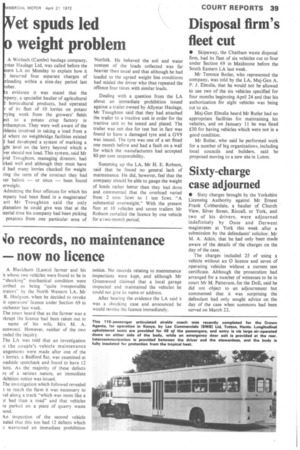et spuds led weight problem
Page 37

If you've noticed an error in this article please click here to report it so we can fix it.
A Wisbech (Cambs) haulage company, ystar Haulage Ltd, was called before the tern LA on Monday to explain how it incurred four separate charges of rloading within a nine-day period last ober.
n evidence it was stated that the pany, a specialist haulier of agricultural horticultural products, had operated of its fleet of 10 lorries on potato rying work from the growers' fields ct to a potato crisp factory in rthampton. They were well aware of the blems involved in taking a load from a d where no weighbridge facilities existed had developed a system of marking a ght level on the lorry beyond which a ver should not load. This system, said Mr vid Troughion, managing director, had rked well and although they must have LI had many lorries checked for weight ring the term of the contract they had ver before — or since — been found erweight.
Admitting the four offences for which his mpany had been fined in a magistrates' urt Mr Troughton said the only planation he could give was that at the Aerial time his company had been picking potatoes from one particular area of Norfolk. He believed the soil and water content of the loads collected was far heavier than usual and that although he had loaded to the agreed weight line conditions had misled the driver who thus repeated the offence four times with similar loads.
Dealing with a question from the LA about an immediate prohibition issued against a trailer owned by Allystar Haulage, Mr Troughton said that they had attached the trailer to a tractive unit in order for the tractive unit to be tested and plated. The trailer was not due for test but in fact was found to have a damaged tyre and a GV9 was issued. The tyre was one of a set fitted one month before and had a fault on a wall for which the manufacturers had accepted 80 per cent responsibility.
Summing up the LA, Mr H. E. Robson, said that he found no general lack of maintenance. He did, however, feel that the company should be able to gauge the weight of loads rather better than they had done and commented that the overload varied from 2 tons 3cw-t to 1 ton 5cwt. "A substantial overweight." With the present fleet at 10 vehicles and seven trailers Mr Robson curtailed the licence by one vehicle for a two-month period.












































































































